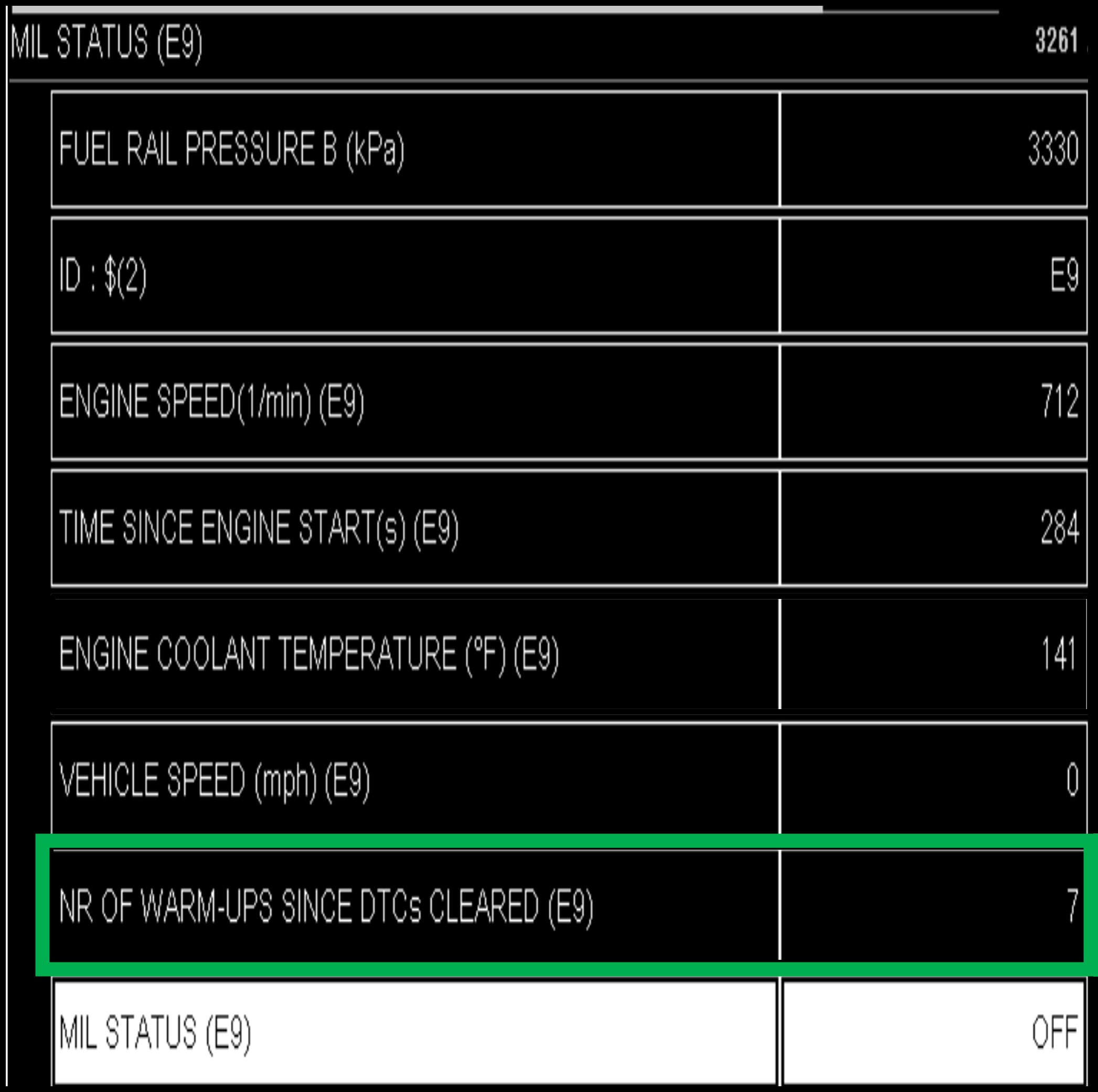After starting a vehicle, it undergoes a “warm-up cycle,” crucial for accurate OBD2 diagnostics. This process allows the engine and emission systems to reach optimal operating temperature, enabling accurate monitoring and testing by the vehicle’s onboard computer. Let’s delve deeper into warm ups and their relationship to OBD2 readiness.
What is a Warm Up Cycle in OBD2?
A warm-up cycle in OBD2 (On-Board Diagnostics II) is defined as a period where the engine coolant temperature (ECT) increases by at least 40°F (22°C) and reaches a minimum of 160°F (71°C). This process allows the catalytic converter and other emission control systems to reach their efficient operating temperature. Completing a specific number of warm-up cycles (typically 40) clears historical Diagnostic Trouble Codes (DTCs) and Freeze Frame Data (FFD) but does not reset readiness monitors or clear permanent DTCs (PDTCs).
As shown in the example image, a lower warm-up cycle count suggests a recent memory clear. The counter reaches a maximum of 255.
Why are Warm Ups Important for OBD2?
Warm ups are critical for accurate OBD2 diagnostics because many emission-related components require specific operating temperatures for proper function and testing. A cold engine won’t provide reliable data for diagnosing emission issues. This is why certain OBD2 monitors won’t run until the vehicle has completed a sufficient warm-up cycle. For instance, a cold start, where ECT and intake air temperature (IAT) are within 10°F of each other and below 122°F (50°C), is often needed to run tests for components like oxygen sensors and the evaporative emission system.
OBD2 Readiness Monitors and Warm Ups
OBD2 systems use readiness monitors to track the status of various emission-related components and systems. These monitors run specific tests based on predefined “enable criteria,” which include factors like engine temperature, speed, and load.
A “trip” is a key cycle (engine on to engine off) that allows the completion of a monitor test when its enable criteria are met. Completing multiple trips under varying driving conditions might be necessary to satisfy all monitor tests and set all readiness flags to “Complete.” This is often referred to as a “drive cycle.”
Readiness Flag Status and Emissions Testing
Readiness flags indicate whether a specific monitor has completed its testing. A “Complete” status means the test has run and passed or failed. “Incomplete” signals that the monitor hasn’t run yet, often due to insufficient warm ups or unmet driving conditions.
Emissions inspections often require a certain number of readiness monitors to be “Complete” for a vehicle to pass. Consequently, understanding warm ups and their impact on readiness monitor completion is crucial for passing emissions tests.
Conclusion
Warm-up cycles are essential for accurate OBD2 diagnostics and ensuring vehicle emissions systems are functioning correctly. Understanding the relationship between warm ups, readiness monitors, and drive cycles is key for both vehicle owners and technicians. This knowledge allows for proper diagnosis of emission-related problems and successful completion of state-mandated emissions inspections.

